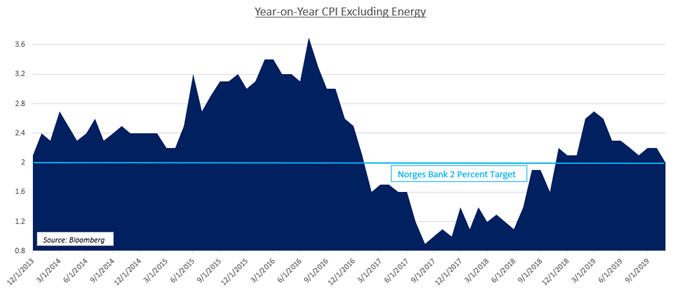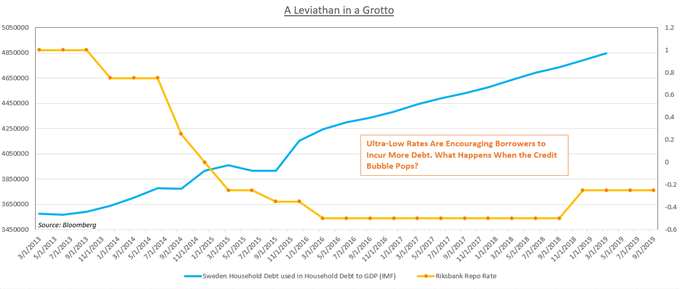Riksbank, Norges Bank, Bank of England, Brexit – Talking Points
- British Pound may rise on BoE minutes after rate decision
- Norwegian Krone may tick higher on Norges Bank outlook
- Swedish Krona braces for Riksbank exiting negative rates
Asia-Pacific Recap: Australian Employment Data
The Australian Dollar rose against its major counterparts after local employment data came out better-than-expected. The unemployment rate for November fell from 5.3 percent to 5.2 percent with a total employment change of 39.9k, over twice as much as the 15.0k estimate. However, APAC equities were swimming in a sea of red with an unclear cause, though part of it may have to do with growing doubt about US-China trade talks.
Bank of England
The Bank of England is expected to hold rates at the 0.75 percent benchmark while Brexit turmoil continues to cloud the outlook. While there will be no press briefing, the minutes will be released at the same time as the rate decision. The British Pound may rise on the minutes if they strike an optimistic tone following the market-friendly election, but officials are already seeing a bumpy road ahead which could pressure Sterling.
Brexit
The British Pound recently erased some of its impressive post-election gains after news broke that Prime Minister Boris Johnson is looking into legally blocking an extension of the transition period. The initial deadline is set for December 31, 2020, but EU officials are doubting whether the PM can ratify a trade agreement in less than 12 months. Markets panicked as it revived the familiar fear of a no-deal Brexit.
GBP/USD – Daily Chart

GBP/USD chart created using TradingView
Norges Bank Rate Decision
Named the “last hawk” after it raised rates three times in 2019 amid a global easing cycle, the Norges Bank (NB) is expected to hold interest rates at 1.50 percent. However, since November 19, there has been a downside shift in implied policy rates across various tenors, reflecting growing dovish expectations. CPI excluding energy continues to stay above the NB’s 2 percent target, though price growth has been declining since March.

The Norwegian Krone may rise if NB Governor Oystein Olsen strikes an optimistic tone amid market-wide optimism over a US-China trade war truce. The unemployment rate is at its lowest point since June and a recovery in crude oil prices may help push the petroleum-linked Norwegian Krone higher. This comes as OPEC is intending on pursuing deep supply cuts through Q1 2020 until their meeting on March 5 and 6.
Riksbank Rate Decision
The Swedish Krona will be closely watching the Riksbank rate decision where policymakers are expected to finally lift rates out of the negative inferno to 0.0 percent. The magnitude behind this event may overshadow the BoE and Norges Bank. Not only is the Riksbank the oldest central bank in the world but it is also the first one to reverse a negative rate regime.
Markets may closely watch the subsequent press conference at 10:00 GMT where Riksbank Governor Stefan Ingves is expected to speak. While traders are expecting for this to be the last hike for a prolonged period of time – as outlined by the central bank – the experiment of shifting from ultra-loose policy to slightly tighter may be a template for how other monetary authorities with similar dilemmas recover.
While accommodative monetary policy may have helped the Swedish economy recover from the 2008 crash and knock-on effects of the Eurozone debt crisis, it has indirectly created a debt problem for the country. The average debt-to-income ratio in Sweden is over 330 percent, most of which have gone into mortgages and led to an over 160 percent rise in housing prices in approximately 17 years.

In the Riksbank’s Global Financial Stability Report, officials wrote that debt poses the greatest risk to the financial system. They added warned that higher unemployment figures and falling housing prices could trigger an interbank financial contagion if Swedes begin to default on their debt payments. To learn more about this topic, see my Nordic fundamental outlook here.
BRITISH POUND TRADING RESOURCES
--- Written by Dimitri Zabelin, Jr Currency Analyst for DailyFX.com
To contact Dimitri, use the comments section below or @ZabelinDimitri on Twitter




